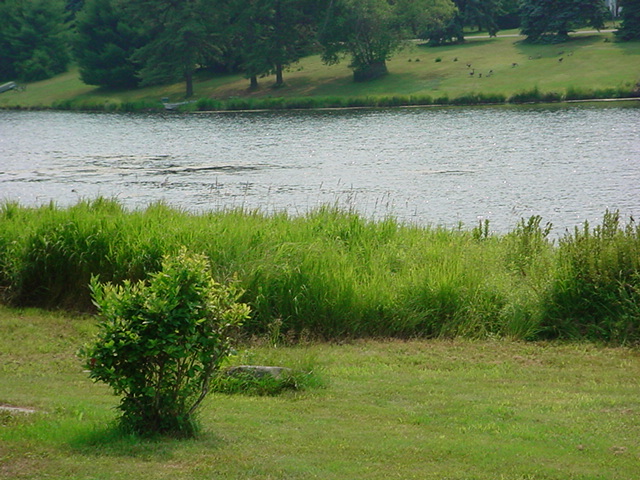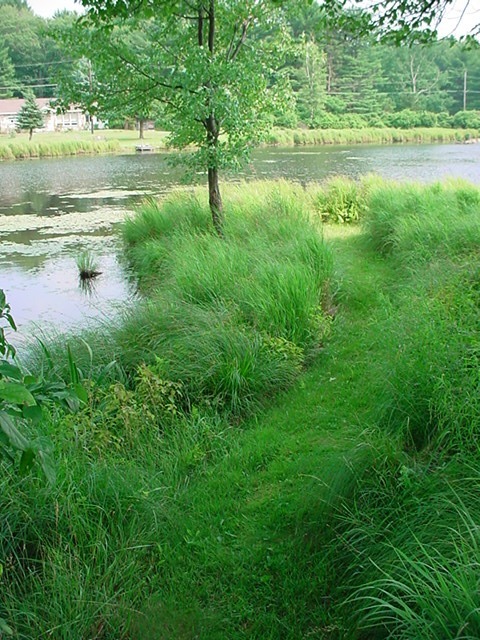News

Riparian Buffer Basics
Riparian buffer is the term for an area of vegetation that grows along a waterway to help prevent substances from reaching the water. The fact that this type of area has its own term should be telling of its importance.
As water flows across the land, or the watershed region, it carries with it a whole slew of pollutants: sediment, chemicals, nutrients, bacteria, litter, etc. These pollutants are filtered and absorbed by the plants and soils growing in riparian buffers, and therefore prevented from entering the water.
Riparian buffers provide flood water storage and help to prevent soil erosion during high rain events and along high motion waters such as streams and lake shores. They also provide cooling shade which helps heat-sensitive aquatic organisms survive (such as brook trout), and control algal growth by blocking sunlight.

Where do we need riparian buffers? Every stream, lake, wetland, and pond will benefit from these helper plants filtering out harmful substances, holding in the soil, and allowing excess water to infiltrate into the ground water system. These plants are most crucial along the waterway edge, and the greater the riparian buffer width, the better.
What makes a good riparian plant? Almost anything with roots, and preferably native species that are tolerant to wet conditions. Trees and shrubs, grasses and forbs (wildflowers), and sedges and rushes, have strong root systems that lock in the soil and are adapted for surviving in our seasonal weather changes. Trees are the most beneficial because they establish long-term roots, continue to grow over time, and provide the most shade, food and shelter proportional to the space they occupy.
A healthy riparian buffer mimics the natural habitat for the area in which it is located, whether it be a forest or a meadow, with a diversity of plant types and heights. Sod, or mowed grass, has leaves too short to aid in filtering, and roots too shallow to aid in erosion protection.
What else do they do? Riparian buffers add to the available habitat and food sources for wildlife such as birds, pollinators, mammals, and other critters, including aquatic ones. Did you know “trees feed trout”? The aquatic insects at the bottom of the food chain, like caddisflies, munch on the tree leaves and their biofilm (algae and bacteria) that have fallen into the streams. Trunks and branches that fall into the stream create aquatic habitat variety as well.
Who can make a riparian buffer? You can! If your property borders a waterway, you can enjoy designing a grow zone that suits your liking. Though it will require some maintenance until the new plants establish, you can enjoy the beauty of the flowers right away. Check the links below to learn more.
Lastly, riparian buffers can serve as a reminder to us that water levels fluctuate within the floodplain, and we should keep development a safe distance from the water’s edge.
Fun Facts:
- 300,000 pounds of sediment can be trapped per riparian buffer acre per year.
- Riparian buffers are essential travel paths, or corridors, that connect green spaces for wildlife.
